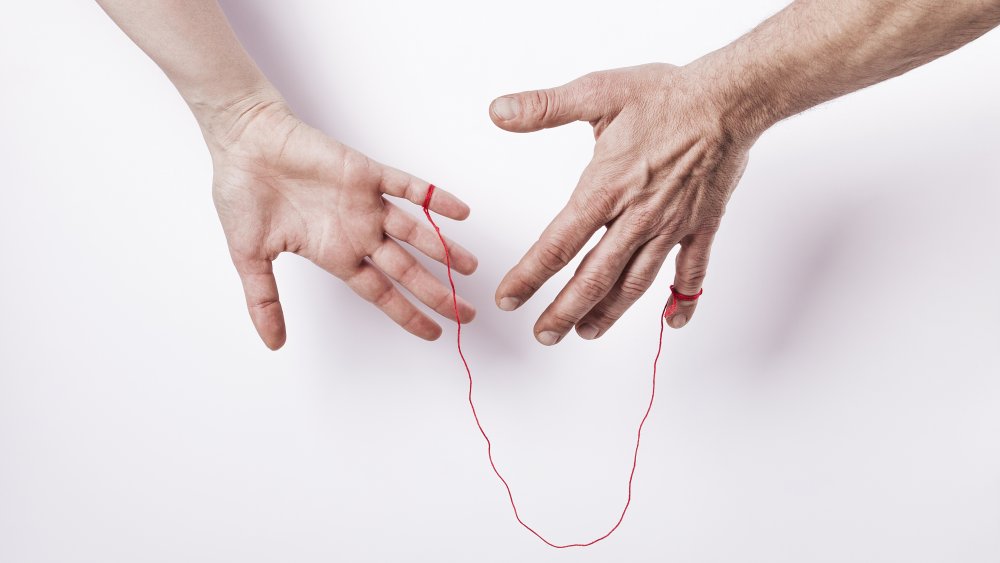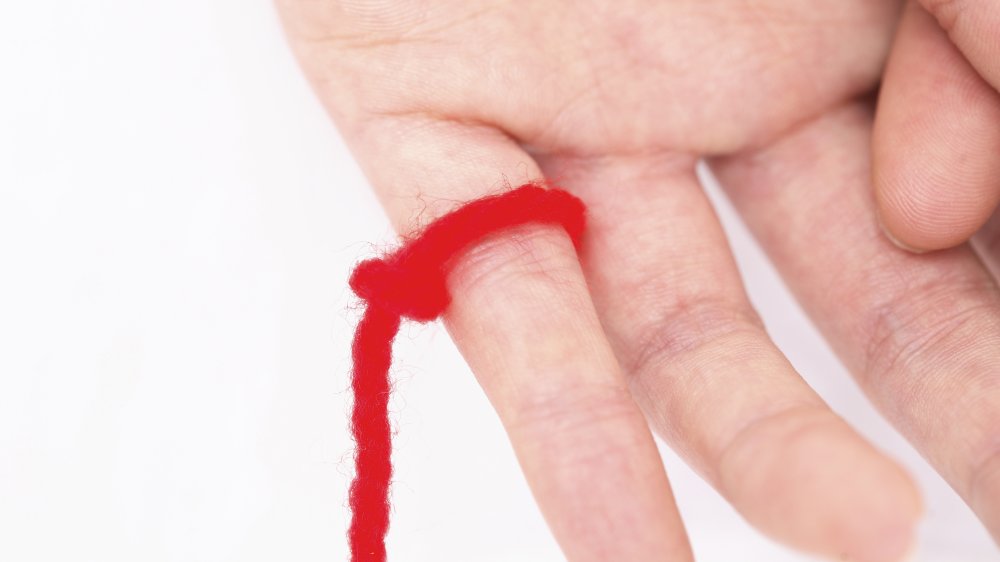The Truth About The Red String Of Fate
We are all drawn to the idea that there is just one person for us out there, and different cultures have different names for the person who we feel we are fated to meet. For some, that person is a twin flame or a soulmate. For the Hindu, there is the "lehnu" — or the soul which karma dictates you continually cross paths with.
Buddhists believe in the idea of "pratitya-samutpada," or that everyone is connected. And in Judaism, you have a "bashert" or "bestowed" — a partner whom destiny has chosen for you.
Further east, Chinese, Japanese, and Korean traditions talk of a "red string of fate" which ties a person to his or her destined partner.
The red string of fate means more than romantic love
Weheartit says stories about the red string of fate appear in Chinese, Japanese, and Korean folklore. The ancient Chinese believed those who are destined to meet and be together have invisible threads string tied around their ankles, while Japanese and Korean myths have a similar piece of red string tied around pinky fingers. The myths share one quality — no matter how much the strings are strained and tested, they are not meant to break.
While the myth usually applies to two people who are fated to meet and spend the rest of their lives together in romantic love, medium and writer Carole Louie further believes the threads also connect those who are fated to meet so they can work together to resolve specific situations. The idea is expressed as "yuanfen," or destiny, in China, as well as in Carl Jung's idea of synchronicity in the west (via Buddhism Guide).
The idea of fate and destiny is so popular in Asia that it appears in just about every form of pop culture there is — songs, soap operas, manga, and anime. So if you happen to be in a dating glut or in a difficult spot, just remember — the person who is tied to the other side of your red string could be just around the corner.

